
All Star Baseball 2003 is a baseball video game published by Acclaim Entertainment in 2002. The game features Derek Jeter on the cover.

Halo 2 is a 2004 first-person shooter game developed by Bungie and published by Microsoft Game Studios for the Xbox console. Halo 2 is the second installment in the Halo franchise and the sequel to 2001's critically acclaimed Halo: Combat Evolved. The game features new weapons, enemies, and vehicles, another player character, and shipped with online multiplayer via Microsoft's Xbox Live service. In Halo 2's story mode, the player assumes the roles of the human Master Chief and alien Arbiter in a 26th-century conflict between the United Nations Space Command, the genocidal Covenant, and later, the parasitic Flood.
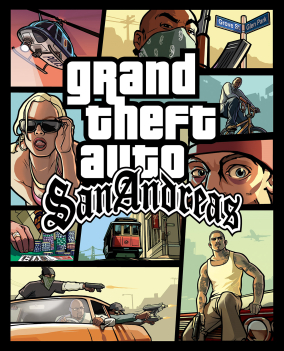
Grand Theft Auto: San Andreas is a 2004 action-adventure game developed by Rockstar North and published by Rockstar Games. It is the seventh title in the Grand Theft Auto series, following 2002's Grand Theft Auto: Vice City. Set within the fictional state of San Andreas, the game follows Carl "CJ" Johnson, who returns home after his mother's murder and finds his old gang has lost much of their territory. Over the course of the game, he attempts to re-establish the gang, clashes with corrupt authorities and powerful criminals, and gradually unravels the truth behind his mother's murder.

Guilty Gear X, subtitled By Your Side in Japan, is a fighting game developed by Arc System Works and published by Sammy Studios. The second installment of the Guilty Gear series, Guilty Gear X was developed over a period of about two years after the first game's success. It was released in July 2000 for Japanese arcades, re-released on Dreamcast in December 2000, and later ported to PlayStation 2 in November 2001 and Game Boy Advance in January 2002.
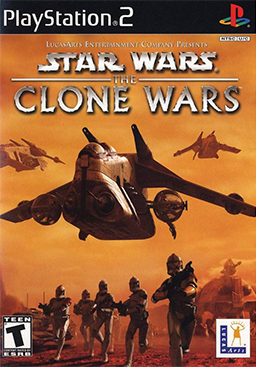
Star Wars: The Clone Wars is a video game set in the Star Wars universe developed by Pandemic Studios and published by LucasArts for GameCube, PlayStation 2 and Xbox. It consists mostly of vehicular combat using clone warships, starfighters, speeder bikes and tanks, as well as missions where players can control Anakin Skywalker, Obi-Wan Kenobi, or Mace Windu on foot. The game is set in the Star Wars prequel trilogy era, with the first level encompassing the Battle for Geonosis from Episode II: Attack of the Clones. The game also features multiplayer modes for up to four players in splitscreen, or online via Xbox Live for the Xbox. It holds aggregate scores of 73 out of 100, 72 out of 100 and 71 out of 100 on review aggregator Metacritic for the GameCube, PlayStation 2, and Xbox, respectively.

The Urbz: Sims in the City is a video game for the Game Boy Advance, GameCube, PlayStation 2, Xbox, and Nintendo DS. It is the third Sims game for video game consoles and is the second Sims game not to be released on Microsoft Windows, after a planned PC port and sequel were both cancelled due to mediocre sales. The next release for consoles and handhelds was the console port of The Sims 2.
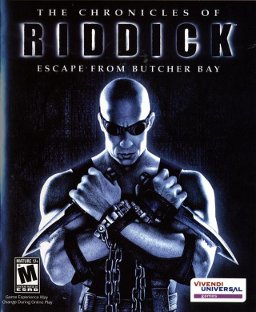
The Chronicles of Riddick: Escape from Butcher Bay is a first-person action and stealth video game developed by Starbreeze Studios and Tigon Studios, and was published by Vivendi Universal Games. Released for the Xbox and Microsoft Windows in 2004, the game's story is a prequel to the futuristic science fiction film Pitch Black. Actor Vin Diesel—who was involved in the game's development—reprises his role as that film's protagonist, Richard B. Riddick.

SSX 3 is a snowboarding video game developed by EA Canada and published by Electronic Arts under the EA Sports BIG label. The game was originally released on October 21, 2003, for the PlayStation 2, Xbox, and GameCube. It was later ported to the Game Boy Advance by Visual Impact on November 11, 2003, and to the Gizmondo by Exient Entertainment on August 31, 2005, as a launch title. It is the third installment in the SSX series.

Meteos is a 2005 tile-matching video game developed by Q Entertainment and published by Bandai for the Nintendo DS. It was produced by Q Entertainment founder Tetsuya Mizuguchi and designed by Masahiro Sakurai. Meteos was inspired by the video game Missile Command (1980), the film The Matrix (1999) and the television series 24 (2001-2010).
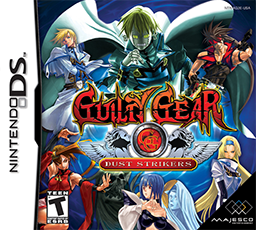
Guilty Gear: Dust Strikers, or Guilty Gear DS, is a fighting game of the Guilty Gear series for the Nintendo DS. Modeled after Guilty Gear Isuka, its gameplay allows up to four player fights. It was the first versus fighting game for the Nintendo DS to be released outside Japan.

X-Men: Next Dimension is a fighting game, released in 2002 for the PlayStation 2, Xbox and GameCube video game consoles. It is the third installment in the X-Men: Mutant Academy fighting game series, following X-Men: Mutant Academy and X-Men: Mutant Academy 2.
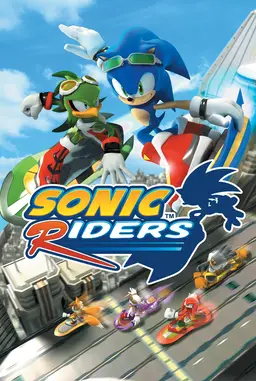
Sonic Riders is a racing video game for the GameCube, PlayStation 2, and Xbox in which the player controls characters from the Sonic the Hedgehog series on hoverboards. In the game's 16 tracks, the player competes against characters—either controlled by computers or other players—in story and battle modes. It was developed by Sonic Team and Now Production, published by Sega, and released in February 2006 in Japan and North America. It was released in Europe the following month and for Windows at the end of the year. A Game Boy Advance version developed by Backbone Entertainment was canceled.
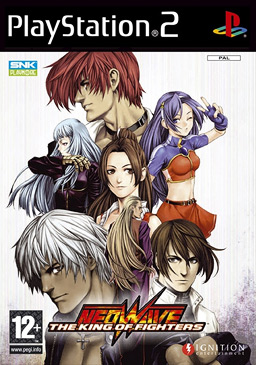
The King of Fighters Neowave(KOF Neowave, or KOF NW) is a 2D fighting game produced by SNK Playmore and released as a coin-operated arcade game for Sammy's Atomiswave hardware in 2004. It was the first game SNK Playmore produced for the Atomiswave. This is a remake of The King of Fighters 2002 with a major change of roster and stages, the game was also made on the PlayStation 2 and Xbox. The PS2 version was released only in Japan and the PAL region, the Xbox version was released both in Japan and North America. The North American version was released on April 18, 2006. In 2020, a Dreamcast homebrew adaptation of the arcade version was also made possible due to the Dreamcast sharing almost identical hardware with its Atomiswave cousin. The character artwork was done by Tomokazu Nakano. In Japan, it was the last game to be released for the Xbox.
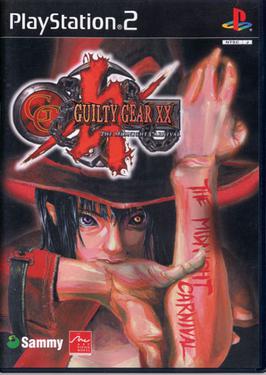
Guilty Gear X2, also known as Guilty Gear XX and subtitled The Midnight Carnival in Japan, is a fighting game developed by Arc System Works and published by Sammy Studios. The third main installment of the Guilty Gear series, Guilty Gear X2 furthered the plot of the series, as well as introduced new characters and gameplay mechanics. A sequel to Guilty Gear X, it was announced in January 2002, and was released on May 23, 2002, for the arcades. It was later ported to the PlayStation 2 and published in North America and Europe.

Battle Fantasia is a fighting video game developed by Arc System Works. Originally released in Japanese arcades in April 2007, the title was ported to the Xbox 360 and PlayStation 3 home consoles in Japan in May 2008, with a North American Xbox 360-exclusive version released in English in September 2008 by Aksys Games. It was later released in the PAL region in 2009 for both systems by 505 Games (Europe) and Aksys Games (Australia). A Microsoft Windows version, ported in collaboration with DotEmu and distributed via Steam, was released on July 7, 2015 as Battle Fantasia: Revised Edition. The game's development was headed by Emiko Iwasaki, who had previously served as illustrator for the company's Guilty Gear series, and features three-dimensional character models restricted to a two-dimensional plane. Battle Fantasia retains a number of features of its predecessor including fast-paced gameplay, colorful anime-style graphics, and over-the-top effects, yet was designed to be a more basic representation of the fighting genre.

Guilty Gear is a 2D fighting video game developed by Team Neo Blood, an Arc System Works production group led by Daisuke Ishiwatari, and published by Arc System Works. First released on May 14, 1998, for the PlayStation, it is the first installment in the series of the same name. Set in a world destroyed by a war between humans and bio-organic weapons called Gears, it follows ten fighters as they enter a tournament held to prevent resurrection of the Gears' leader. Its gameplay consists of one-on-one fights, a four-button attack configuration featuring special moves and instant kill techniques, as well as three different playable modes.

Capcom Fighting Evolution is a 2004 head-to-head fighting game from Capcom. It was originally released as a coin-operated arcade game for the Namco System 246 hardware and ported to the PlayStation 2 and Xbox. The game features characters from three different incarnations of the Street Fighter series, as well as characters from the Darkstalkers series and the CPS III arcade game Red Earth, with each character employing the fighting system from the game which they represent.
Guilty Gear is a series of fighting games by Arc System Works, created and designed by artist Daisuke Ishiwatari. The first game was published in 1998, and has spawned several sequels. It has also adapted to other media such as manga and drama CD. Guilty Gear has generally received praise from video game reviewers for its highly technical gameplay, graphics, soundtrack, and for its characters. Another fighting game franchise by Arc System Works, BlazBlue, is considered a spiritual successor of the series.

Guilty Gear Xrd is a fighting video game sub-series by Arc System Works and part of the Guilty Gear series. Guilty Gear Xrd was developed using Unreal Engine 3, with cel-shaded graphics in place of the series traditional hand drawn sprites. Following the storyline of the last game in the series, Guilty Gear 2: Overture, it introduced seven new characters.
Guilty Gear X2 is a 2D fighting video game developed by Arc System Works, and published by Sammy Studios. It was first released on May 23, 2002 for Japanese arcades, and later ported to the PlayStation 2 for North America in 2003. The game received updated versions for several platforms, each containing various adjustments: Guilty Gear X2 #Reload (2003), Guilty Gear XX Slash (2005), Guilty Gear XX Accent Core (2006), Guilty Gear XX Accent Core Plus (2008), and Guilty Gear XX Accent Core Plus R (2012).



















